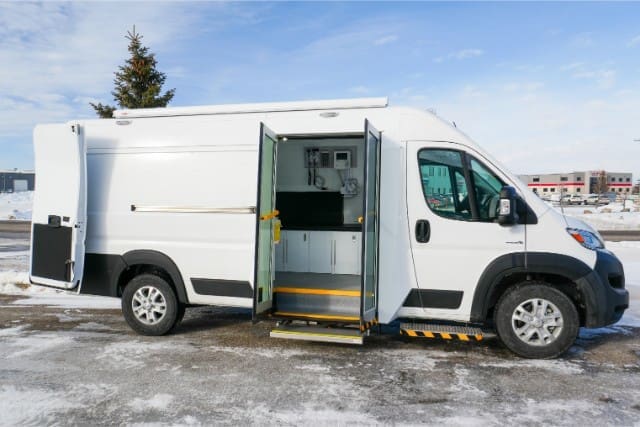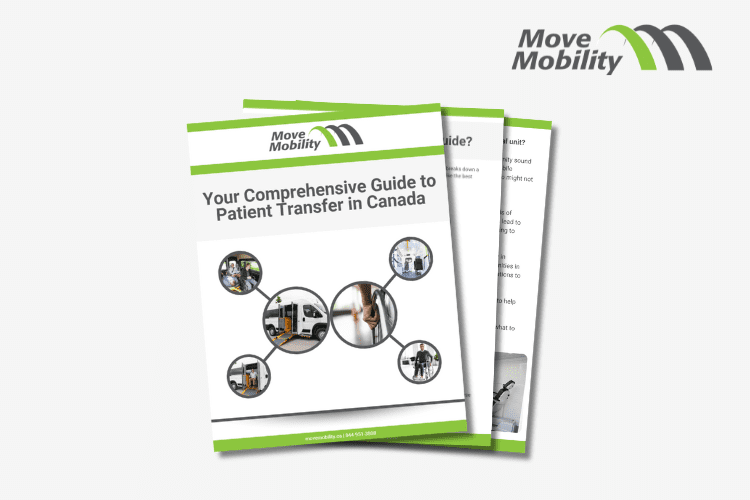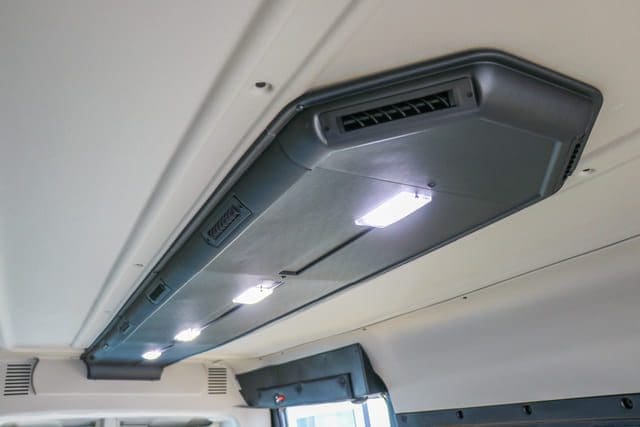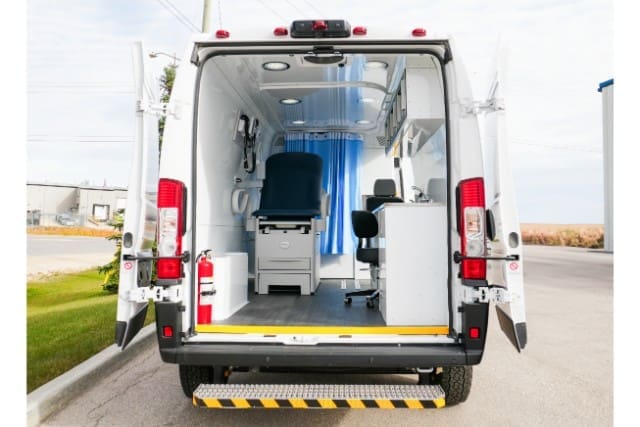Have your organization ever felt stuck, wondering how to help people in your community get better healthcare or transportation? For many underserved communities across Canada, transportation and healthcare are tough to access. Without the right tools, it’s hard to break down the barriers that keep people from living full and healthy lives. You want to help, but maybe you’re unsure where to start or how to make the biggest impact.
The truth is, if this problem isn’t solved, people in your community may face isolation, missed opportunities, and declining health. But what if you could change that? Imagine your organization providing real solutions—helping people stay connected, get to work, and access medical care. It’s possible with the right tools, like véhicules accessibles aux fauteuils roulants ou véhicules médicaux mobiles.
Au MoveMobility, we’ve been helping organizations like yours and Keewatinohk Inniniw Minoayawin for over 20 years. We design vehicles that supprimer les obstacles to transportation and healthcare, helping you serve your community better. We’re here to share what we’ve learned—not just to sell but to guide you.
In this article, you’ll learn five ways accessible vans can promote inclusion and make a difference in underserved communities. Let’s explore how you can create a real impact.
How can accessible vans promote inclusion?
Accessible vans can promote inclusion in several ways. Keep reading to learn how!
1. Meeting people where they are
Think about this: What happens when someone can’t get to a doctor’s office or clinic? For many people in underserved communities, this is their reality. They live far from healthcare services, or they face challenges that make even short trips impossible. This leaves them feeling stuck and excluded, unable to get the care they need.
Accessible vans change that by bringing healthcare and transportation directly to them.
Voici comment :
Fourgonnettes médicales mobiles: These vans act like travelling medical clinics. They visit remote or low-income communities, offering care like:
- Checkups and les vaccinations
- Soutien à la santé mentale
- Specialized services, like
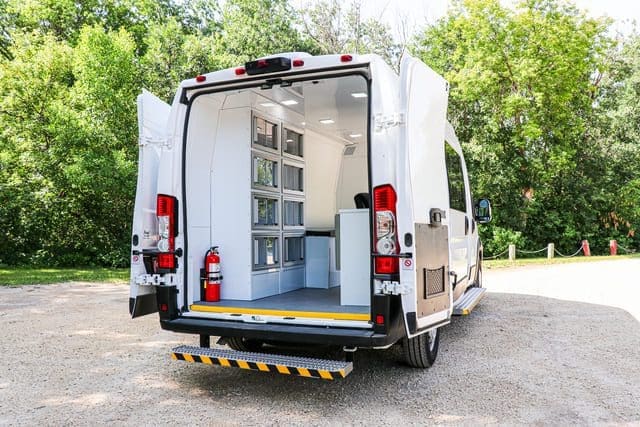
Fourgonnettes accessibles aux fauteuils roulants: These vehicles help people who use wheelchairs or have mobility challenges:
- Get to local clinics or hospitals
- Attend community events or social activities
- Stay connected to jobs and opportunities
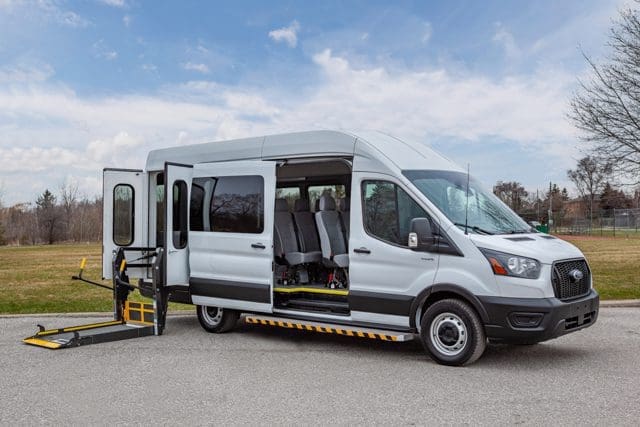
Accessible vans remove the biggest barriers—distance and mobility. They allow people to feel included, cared for, and supported, no matter where they live. Communities grow stronger when everyone has access to transportation and healthcare. These vans help close the gap so no one is left behind.
2. Opening doors to independence and dignity
What does it feel like to depend on others for even the simplest tasks? People with mobility challenges in underserved communities face far more than just an occasional frustration; it’s a constant struggle. Limited transportation and healthcare options force many to rely on family, friends, or community programs, leaving them with little sense of independence.
Wheelchair accessible vehicles and mobile medical vehicles change the game. They allow individuals to take control of their lives and meet their needs on their own terms.
Here’s how they promote independence and dignity:
Personal freedom: Wheelchair accessible vans help people:
- Travel to social gatherings, church, or community events without needing to ask for a ride
- Handle daily errands like grocery shopping or pharmacy trips independently
Access to routine care: Mobile medical vehicles empower patients to:
- Schedule care that fits their life, not someone else’s schedule
- Build relationships with healthcare providers who come to their community
Feeling included means more than just being physically present—it’s about having the freedom to choose how you live. Accessible vans give individuals a sense of dignity and control. They’re no longer stuck waiting for help; they can go where they need to, when they need to, on their own terms.
3. Accessible vans can strengthen community connections
Have you ever felt left out because you couldn’t get to where the entertainment was? People without reliable transportation experience that feeling all the time. They miss family events, community programs, or social gatherings—not because they don’t want to go, but because they can’t. Over time, this creates a deep sense of isolation.
Accessible vans help break that isolation and bring people back into the community.
Voici comment :
Connecting people to others:
- Wheelchair accessible vans allow people to attend social events, family dinners, or even a friend’s birthday party. Being part of these moments makes people feel included and valued.
- Community groups use these vans to take members to activities, like classes or support groups, where friendships can grow.
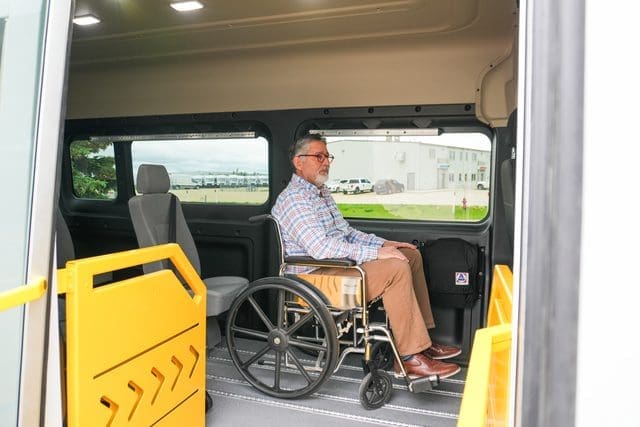
Creating shared spaces:
- Mobile medical vans often act as more than a clinic—they become somewhat of a meeting place. People gather to access care, learn about resources, or simply chat with neighbors while waiting.
- Local programs partner with these vans to bring services to communities, helping everyone feel connected and cared for.
Pourquoi cela est-il important ? When people feel part of a community, their mental health improves, and they feel more hopeful. Accessible vans help make those connections possible, creating stronger, happier communities.
4. Supporting economic opportunities
Have you ever thought about how hard it is to get a job if you can’t get there? Many individuals in underserved communities face significant challenges due to a lack of reliable transportation. This barrier makes it difficult to attend work, job interviews, or training programs. That makes it harder to earn money and improve their lives.
Accessible vans make a big difference by opening doors to new opportunities.
Voici comment :
Getting to work:
- Wheelchair accessible vans help people with mobility challenges make it to jobs they couldn’t reach before. They can work regularly and feel more independent.
- Employers can also use these vans to support workers who need accessible transportation, making their workplaces more inclusive.
Learning new skills:
- Accessible vans let people attend school, job training programs, or even career fairs. These chances are often out of reach when transportation is a problem.
- Mobile medical vans sometimes provide health education, teaching people how to stay healthy and ready for work.
Pourquoi cela est-il important ? When people have a way to get to work or training, they can build better futures for themselves and their families. Communities grow stronger when everyone has the chance to succeed.
5. Helping in emergencies and disasters
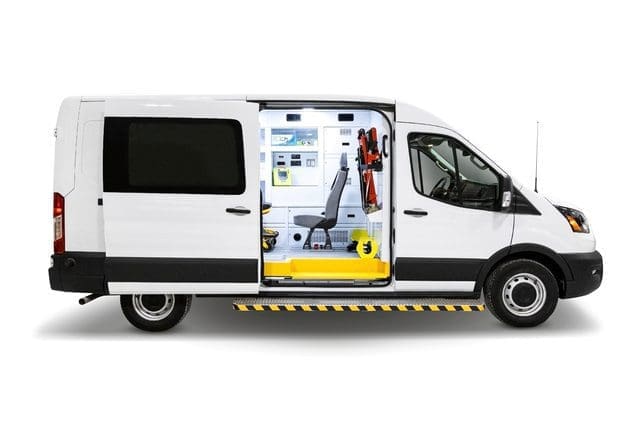
Have you ever thought about how hard it is to evacuate or get help during an emergency if you can’t move easily? People with mobility challenges can find disasters like floods, wildfires, or snowstorms particularly scary and downright dangerous. Without the right transportation, they may struggle to evacuate or seek the necessary care. Accessible vans and mobile medical vehicles help keep everyone safe during emergencies.
Here’s how they make a big difference:
Getting people to safety:
- Wheelchair accessible vans make it easier for people with mobility challenges to evacuate quickly when disaster strikes.
- Families and communities can use these vans to help everyone get to a safe place, fast.
Bringing care to those in need:
- Mobile medical vehicles can travel to areas hit by disasters, offering medical care to people who can’t get to a hospital.
- These vehicles provide things like first aid, medicine, and other urgent help when it’s needed most.
Pourquoi cela est-il important ? Emergencies are stressful for everyone, but they’re even harder for those with limited mobility. Accessible vans make sure no one is left behind, giving people the support they need to stay safe and recover.
Ready to become more inclusive with accessible vans?
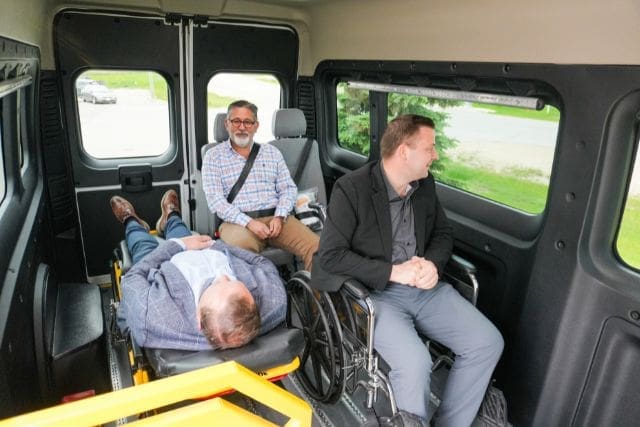
You likely came to this article because you want to make your community or organization more inclusive. Maybe you’ve been:
- Searching for ways to break down barriers to transportation and healthcare
- Trying to provide better services for people in need
- Looking for solutions to create opportunities for those often left behind
These are everyday challenges and gaps that need solutions to change lives.
After reading this, you’ve learned how wheelchair accessible vehicles and mobile medical vans can help. These vehicles can:
- Bring care and transportation directly to people who need it
- Support independence and dignity for individuals with mobility challenges
- Strengthen community connections and provide access to opportunities
Au MoveMobility, we know every community and organization is different, and we take the time to understand your unique challenges. Our vehicles are built to open doors to inclusion, connection, and opportunity. What sets us apart is our commitment to helping you create a brighter, more accessible future for everyone you serve.
If you’d like to learn how we can help your organization, click the button below to talk to a mobility expert. We’re here to answer your questions and guide you every step of the way.
If you’re not ready to reach out just yet, check out our other resources to learn more about promoting inclusivity with wheelchair accessible and mobile medical vehicles!
Start by watching the video below on how you can customize your mobile clinic.
If your organization is more focused on the wheelchair vehicle side of things, check out the 11 steps to choosing a wheelchair van video below.


